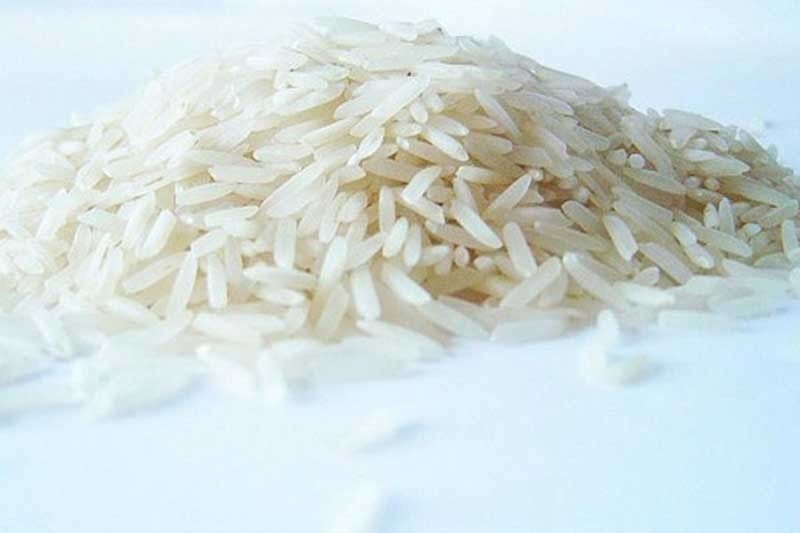Marcos Jr. on P20/kilo rice: We’re almost there

MANILA, Philippines — The government is inching toward its goal of lowering the price of rice to P20 per kilo, President Marcos said yesterday, as he vowed to sustain measures aimed at ensuring access to affordable goods.
Speaking during the launch of the Kadiwa ng Pangulo program in Pili, Camarines Sur, Marcos said the government is shouldering the hidden costs in the transportation of farmers’ products so these could be sold to consumers at lower prices.
He added that his administration’s decision to increase the number of Kadiwa outlets – stores that offer lower-priced products – has yielded positive results.
“For example, rice. My goal before assuming office is to lower the price of rice to P20 (per kilo). Hindi pa tayo umaabot doon, dahan-dahan palapit. Nasa P25 na lang tayo. Kaunti na lang, maibababa natin ‘yan (We are not yet there. We are inching towards that. We are at P25 per kilo. We are nearing that, we can lower that),” the President pointed out.
Reducing the price of rice to P20 per kilo was one of the campaign promises Marcos made during the 2022 presidential race. The staple is sold at P25 per kilo at Kadiwa outlets. The administration has so far launched more than 500 Kadiwa ng Pangulo outlets nationwide to help farmers and producers secure direct access to markets.
In an interview with reporters, Marcos, also the agriculture secretary, said he wants to see the P20 per kilo rice “as soon as possible.”
“Yesterday if not sooner. All my timetables are ‘yesterday, if not sooner’,” he said.
“Lahat ‘yan ASAP (All of these should be done as soon as possible). I don’t know, we’ll see... We are sometimes unlucky when it comes to weather, you cannot be sure about the production and the supply. So let’s see. It keeps going down. We’ll keep working on it,” he added.
But the farmers’ group Samahang Industriya ng Agrikultura (SINAG) cautioned Marcos yesterday, saying the P20-per-kilo rice should not result in a drop in farmgate prices of palay.
Jayson Cainglet, SINAG executive director, said that the government should subsidize the lower prices of rice.
“At subsidized rates for the benefit of consumers, rice at P20 per kilo is possible and we welcome that if it will be a government policy to subsidize the retail prices of rice but not at the expense of depressing farmgate prices,” Cainglet pointed out.
He noted that the current farmgate prices of palay ranged between P23 and P23.50 per kilo, which would mean that the retail prices “without government intervention, will hover around P42 to 46 per kilo.”
According to Cainglet, imported rice also went up amid the spike in the global price due to the high cost of farm inputs, fuel and the depreciation of peso to the dollar.
“We hope the economic managers would not succumb in advising the President to push for more rice imports in the guise of the P20 per kilo of rice and they should only give the right information to the President. We can only ultimately lower the retail cost of rice if we can introduce interventions that would lower the cost of producing palay, cut post-harvest losses and remove non-productive players in the whole supply chain of the rice industry,” he added.
Aside from the efforts to lower the prices for rice, Marcos said his government also increased the supply of onions to lower the prices of the commodity.
“The same is true with sugar. Its price reached P100 plus per kilo. Now it’s P85 and below,” he noted as he reiterated the need to boost production to sustain the Kadiwa program and lower prices.
“If production cannot do it, we have to import. We are avoiding importation. That’s why we are strengthening the production side... As long as the production increases, the production cost decreases and the prices of goods will go down,” Marcos said.
He added that the country would avoid paying for other countries’ “inflation” if it manages to avoid importation.
Farmgate prices for onions
Two officials of the Department of Agriculture (DA) offered contrasting views over a proposal to impose a floor price on the farmgate prices of onions.
Agriculture Assistant Secretary and deputy spokesman Rex Estoperez expressed his doubt during an interview with The STAR on whether traders would follow if a price ceiling is implemented in the country – contradicting an earlier statement by Agriculture Assistant Secretary and spokesperson Kristine Evangelista.
“Normally, if there is floor price or price ceiling, even a suggested retail price, nobody follows unless there is a penalty to be imposed,” Estoperez said.
Evangelista earlier said the imposition of floor price was already discussed with SINAG to prevent the experience where the farmgate prices of onions went down to as low as P10 per kilo.
Estoperez admitted that the retail price of the bulbs remains high despite the drop in the farmgate price of onions.
“As we can see, the retail price of onions in the markets is still pegged at P100, P150 (per kilo) but the farmgate price dropped to P45, P50 per kilo. We are looking into that,” he said.
Jimmy Vistar, a member of the farmers’ group Nueva Ecija Onion Farmer Association, criticized officials of the DA for their failure to address the decline in the farmgate price of onions as he expressed fear that the bulbs will plummet to P10 per kilo if the government fails to intervene.
Estoperez maintained that efforts are now being made to address the concerns of the onion farmers.
“We know that this is the peak season of the harvest. We are looking into the possibility to help farmers sell their produce directly to the market,” he said.
He added that the DA is also pushing for the establishment of more storage facilities to give farmers an option to store their harvest.
In fact, as early as now, we are trying to address the issues of onion farmers in Occidental Mindoro as the peak harvest in the province will start in April and May. There are cold storage facilities in the area but the problem is the fluctuating electric current there,” Estoperez noted.
He said the Bureau of Plant Industry (BPI) and the Office of the Inspectorate and Enforcement are working to ensure that the country will have enough onion supply until December.
“The strategy of price manipulators includes that they will stop buying to dampen the farmgate price of onions and once the farmgate price reaches P10 to P15 (per kilo), they buy and store the bulbs in cold storage. By August, September, they will start releasing at a higher price,” Estoperez added.
The retail price of onions reached as high as P720 per kilo in December 2022 amid the shortage in the supply.
Based on the monitoring of the DA on Thursday in Metro Manila markets, the retail price of local red onions ranged between P90 and P150 per kilo; local white onions, between P90 and P140 per kilo; and imported red and white onions, P100 per kilo.
Meanwhile, the United Nations Green Climate Fund (GCF) approved a $39.2-million project to help the Philippines boost the resilience of its climate-vulnerable farmers.
The Food and Agriculture Organization (FAO) of the United Nations said yesterday that the Philippines’ funding proposal on “Adapting Philippine Agriculture to Climate Change” was approved by the GCF in a board meeting held in South Korea.
Under the seven-year initiative, the FAO, GCF and the Philippine government will work together to boost the resilience of climate-vulnerable rural smallholder farmers.
The project will play a key role in advancing the country’s transition toward more sustainable, resilient and inclusive agrifood systems. It will be supported by a $26.2-million GCF grant and $12.9 million in co-financing from the DA and the Philippine Atmospheric, Geophysical and Astronomical Services Administration.
The initiative will directly benefit 1.25 million Filipino farmers by raising their awareness of climate risks and risk-reduction measures, building their capacity to develop enterprises and to access finance and related technologies, and adopting climate-resilient agriculture practices. – Bella Cariaso, Pia Lee-Brago
- Latest
- Trending































